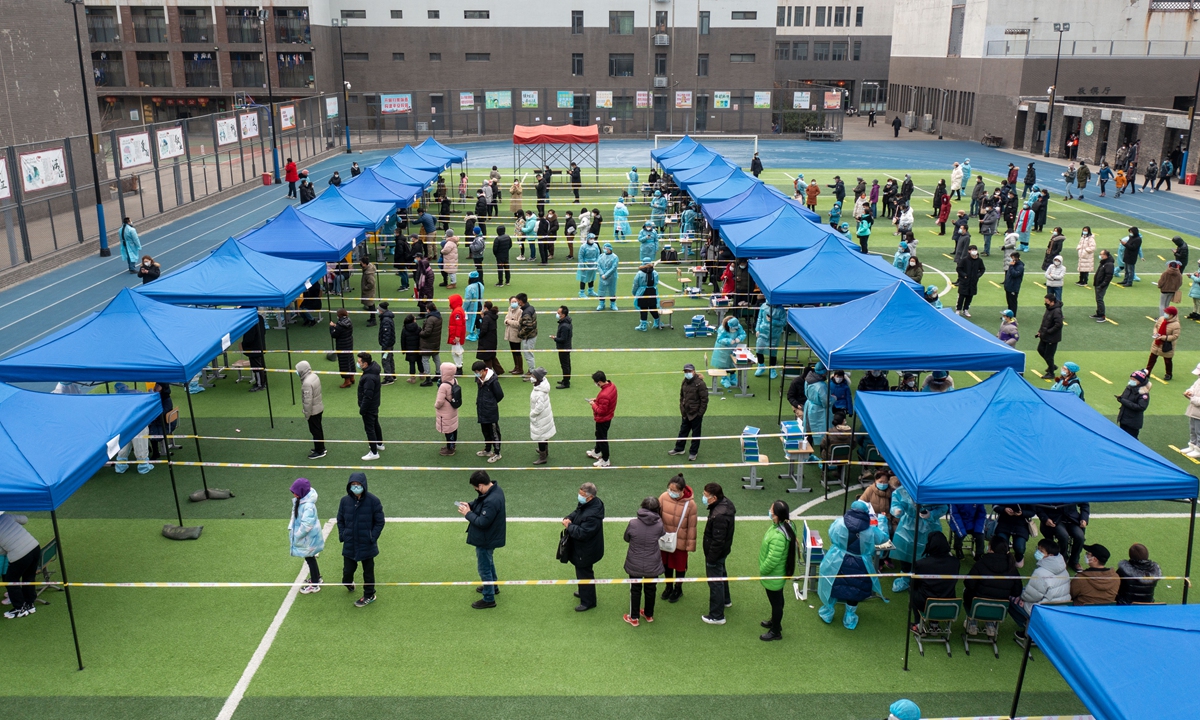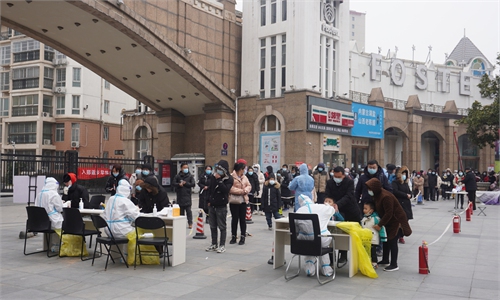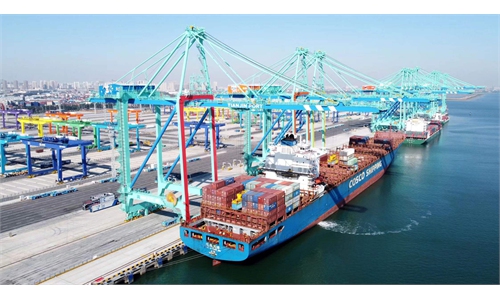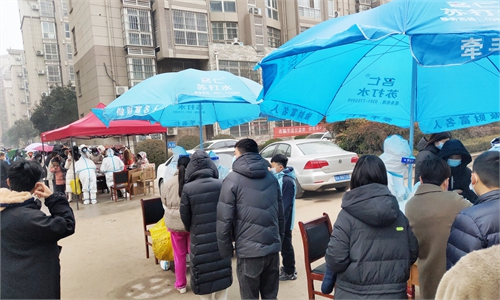Anti-epidemic measures must be earlier, quicker, stricter as Omicron spreads faster and hides well: Tianjin CDC

Residents take nucleic acid tests in Tianjin on January 9, 2022. Photo: VCG
Compared with the Delta variant, Omicron spreads faster and hides well among the masses. Therefore, anti-epidemic measures must be earlier, quicker, and stricter than before, Zhang Ying, Deputy Director of the Center for Disease Control and Prevention of Tianjin, said in an interview with media on Monday on how the city is fighting China's first real battle against Omicron.
It means that Tianjin must "run ahead of the virus," limiting personnel flow in an early stage, carrying out all-member COVID-19 tests and quarantining close contacts, as well as people exposed to infection risks.
The city will also report if related cases are found in other regions. An instant communication mechanism has been set up between Tianjin and Beijing to ensure the Beijing 2022 Winter Olympic Games can proceed successfully.
We found some risk areas in this outbreak in Tianjin and cleared the communities to prevent community transmission, Zhang said.
Neighboring Beijing and home to 15 million people, North China's Tianjin Municipality started massive nucleic acid testing on Sunday, a quick response to the new Omicron variant after 20 COVID-19 infections were reported in a single day, with two identified as Omicron cases.
It cannot be ruled out that the Omicron variant was imported from overseas directly as the virus spreads through humans, contaminated objects and droplets in the air, Zhang said, noting that staff are tracing the source of the virus based on the current clues to determine if it was imported from regions outside Tianjin.
Fortunately, the transmission chain is connected and clear regardless that the source is still undetermined, according to Zhang.
As of Monday afternoon, over 9 million samples of nucleic acid tests were conducted, with 3.4 million, about one third, coming back with negative results. However, it is still too early to judge whether the virus has spread out, Zhang noted.
"The virus has spread in at least three generations in the latest outbreak which means it has been spreading silently for 15 to 21 days and more cases may emerge," Zhang said, noting that it is necessary to conduct city-wide nucleic acid tests to stay ahead of the virus and figure out how widespread this outbreak is.
The Omicron variant is spreading very fast with one generation spreading in two to three days. "Tianjin must complete city-wide COVID-19 screening within two days because it should be initially clear whether the virus has spread from one point to another," Zhang noted.
The concealing nature of the Omicron variant poses great challenges for health departments to locate the source of the virus. The Omicron cases in Tianjin and Anyang, in Central China's Henan Province, all present very light symptoms or even none at all which suggests that the first case of the virus may have also experienced no abnormalities.
Besides, it could lead to gaps in identifying the generations of virus contagion, meaning a grave challenge for epidemic prevention and control.
As more than half of the COVID-19 cases in Tianjin were middle and primary school students, it has triggered debates over whether the Omicron variant infects children more easily.
Responding to the question, Zhang said that the high infection rate in children was because the outbreak started at a childcare center and a primary school, which then became a cluster of infections. However, as cases mount, more adults have been infected, so it is more accurate to say that the Omicron variant not only infects children, but all age groups.



